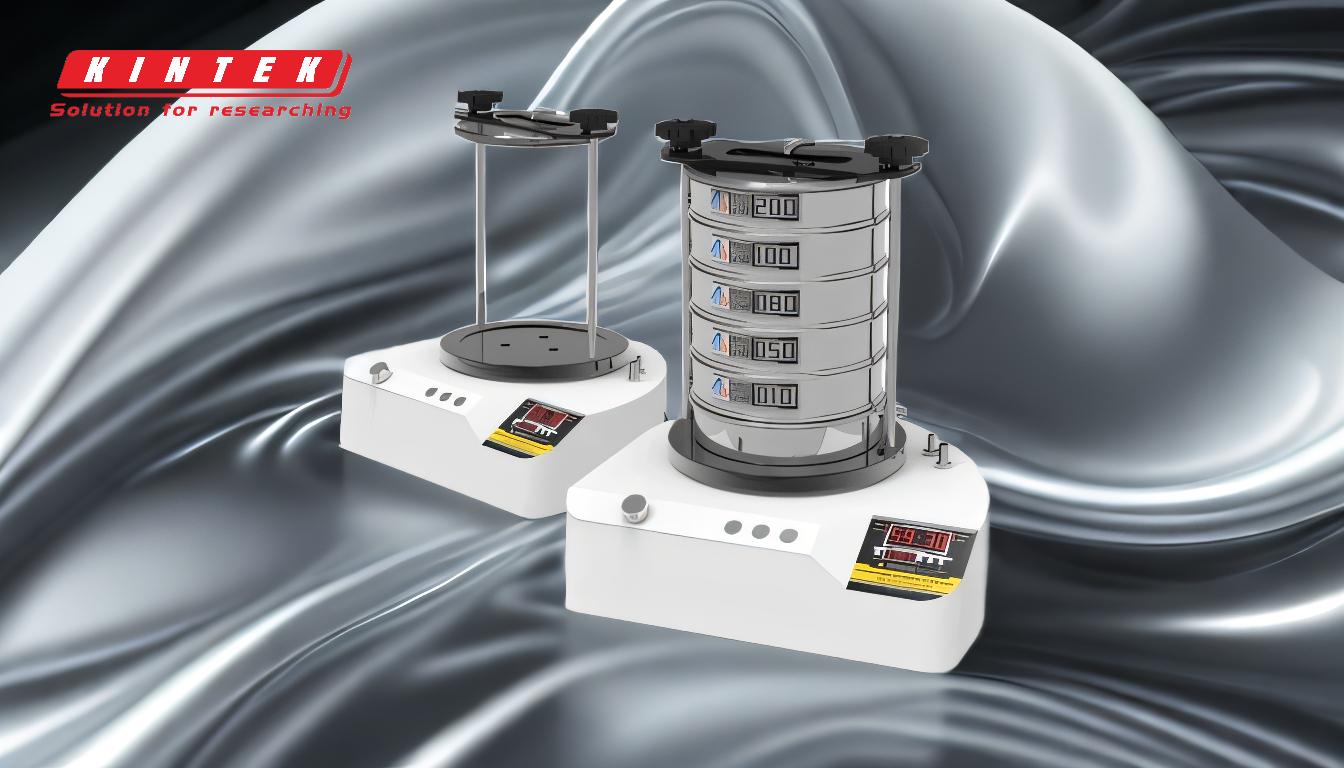Material processing is a critical step in numerous industries, from food and pharmaceuticals to mining and construction. The goal is often to separate, refine, and purify raw materials into usable components, and one of the most important tools in this process is the sieving machine. Traditionally, sieving has been a labor-intensive, manual process. However, the advent of automatic sieving machines has revolutionized the field, enhancing efficiency, precision, and scalability in material processing.
In this blog, we’ll explore how automatic sieving machines are transforming the industry, the key benefits they offer, and how they’re shaping the future of material processing.
1. The Basics of Sieving in Material Processing
Before diving into the specifics of automatic sieving machines, it’s essential to understand the role sieving plays in material processing.
What is Sieving?
Sieving is the process of separating particles based on size. A sieve, also known as a screen, contains holes or apertures that allow smaller particles to pass through while retaining larger ones. This technique is used to classify materials, ensuring uniform particle size for further processing or final use.
In industries like food processing, pharmaceuticals, and mining, sieving ensures product consistency, removes impurities, and optimizes material quality. However, traditional sieving methods rely heavily on manual labor, are time-consuming, and can be prone to error.
Limitations of Traditional Sieving
Manual sieving machines require human operators to monitor and control the process, which presents several challenges:
- Labor-Intensive: Manual sieving requires constant supervision and physical effort.
- Inconsistent Results: Variations in how the sieves are handled can lead to inconsistencies in material separation.
- Low Throughput: Processing large volumes of material can be slow and inefficient.
- Prone to Contamination: Increased human involvement heightens the risk of contamination, especially in industries like food and pharmaceuticals.
This is where automatic sieving machines come into play, offering significant improvements over traditional methods.
2. How Automatic Sieving Machines Work
Automatic sieving machines take the fundamental principles of sieving and enhance them through automation. These machines use advanced technology to streamline the sieving process, offering greater precision, speed, and reliability.
Key Components of Automatic Sieving Machines:
- Vibrating Motors: Automatic sieving machines typically use vibration to facilitate particle movement through the sieve. This vibration can be precisely controlled to ensure optimal sieving performance.
- Automated Feeders: These machines are often equipped with automatic feeders that regulate the flow of material onto the sieve, ensuring consistent throughput and minimizing operator involvement.
- Sensors and Control Systems: Many automatic sieving machines feature integrated sensors and control systems that monitor the sieving process in real-time. These systems can adjust the vibration intensity, material feed rate, and other parameters to ensure the most efficient operation.
- Multiple Sieve Decks: Some machines come with multiple sieve decks, allowing for the simultaneous separation of materials into different size categories.
3. Benefits of Automatic Sieving Machines
The switch to automatic sieving machines offers numerous advantages across various industries, from increased efficiency to improved safety and reduced operating costs.
1. Enhanced Efficiency and Productivity
Automatic sieving machines operate continuously, with minimal human intervention. This increases the throughput of materials processed in a given period, making it possible to handle larger volumes in less time. Industries dealing with high demand, such as pharmaceuticals or construction, can significantly benefit from the machine’s ability to work 24/7 without fatigue.
2. Improved Accuracy and Consistency
One of the primary drawbacks of manual sieving is variability. Factors like operator fatigue, variations in technique, and inconsistent material feeding can all lead to inconsistent results. Automatic sieving machines eliminate these issues, providing highly consistent and repeatable sieving performance. This accuracy is especially crucial in industries like pharmaceuticals, where the correct particle size can impact the efficacy of the final product.
3. Reduced Labor Costs
Manual sieving is labor-intensive, requiring several workers to monitor and maintain the process. Automatic sieving machines drastically reduce the need for human labor, leading to significant cost savings. The machines require minimal supervision, freeing up workers for other tasks and reducing the overall labor burden.
4. Improved Safety and Hygiene
In industries like food and pharmaceuticals, maintaining a clean, hygienic environment is paramount. Automatic sieving machines minimize the risk of contamination by reducing the amount of human contact with the materials being processed. Many machines are designed with stainless steel components that are easy to clean, ensuring compliance with stringent hygiene standards.
5. Versatility and Scalability
Automatic sieving machines can be easily integrated into existing production lines, making them highly adaptable to various industries and applications. Whether a company is processing fine powders, granules, or large aggregates, automatic sieving machines can be configured to meet specific needs. Additionally, these machines can be scaled up or down depending on production requirements, providing flexibility for growing operations.
6. Energy Efficiency
Many automatic sieving machines are designed with energy efficiency in mind. They can be programmed to operate only when needed, reducing energy consumption compared to traditional sieving methods that may require continuous operation.
4. Applications of Automatic Sieving Machines Across Industries
Automatic sieving machines are transforming multiple sectors by providing greater control and efficiency in material processing. Here are some of the key industries benefiting from this technology:
1. Food Processing
In food production, sieving is essential for quality control, ensuring that food products are free of contaminants and uniform in size. Automatic sieving machines are used to separate ingredients like flour, sugar, and grains, improving product consistency and reducing contamination risks.
2. Pharmaceuticals
In the pharmaceutical industry, sieving is critical for producing consistent particle sizes, which can affect the dissolution rate and bioavailability of medications. Automatic sieving machines are used in tablet production, powder processing, and other applications where precision is vital.
3. Mining and Quarrying
The mining industry deals with large volumes of materials that need to be sorted and processed. Automatic sieving machines make it possible to quickly and efficiently separate valuable minerals from waste materials, improving recovery rates and reducing the environmental impact of mining operations.
4. Chemicals and Fertilizers
In chemical and fertilizer production, sieving is used to separate and classify materials like powders, granules, and liquids. Automatic sieving machines help ensure that final products meet the required specifications and are free of contaminants.
5. Construction
In the construction industry, sieving is often used to separate aggregates like sand, gravel, and crushed stone. Automatic sieving machines allow for the precise classification of materials, ensuring that the correct grades of materials are used in construction projects.
5. The Future of Automatic Sieving Technology
As industries continue to embrace automation, the future of sieving machines looks promising. Advances in artificial intelligence (AI) and machine learning are likely to play a significant role in the evolution of automatic sieving machines, enabling even greater precision and efficiency.
Future machines may be able to self-optimize based on the material being processed, reducing the need for manual adjustments and enhancing overall performance. Additionally, innovations in sensor technology could allow for real-time monitoring of material composition, improving quality control and reducing waste.
Conclusion
Automatic sieving machines are revolutionizing material processing by enhancing efficiency, accuracy, and safety across a wide range of industries. Whether it’s ensuring the quality of food products, improving pharmaceutical manufacturing, or optimizing mining operations, these machines offer numerous benefits over traditional sieving methods. As technology continues to advance, automatic sieving machines will play an increasingly important role in the future of material processing, helping companies meet growing demands while maintaining high standards of quality and efficiency.
By investing in automatic sieving technology, businesses can not only increase their productivity but also improve their competitive edge in today’s fast-paced, automation-driven world.




